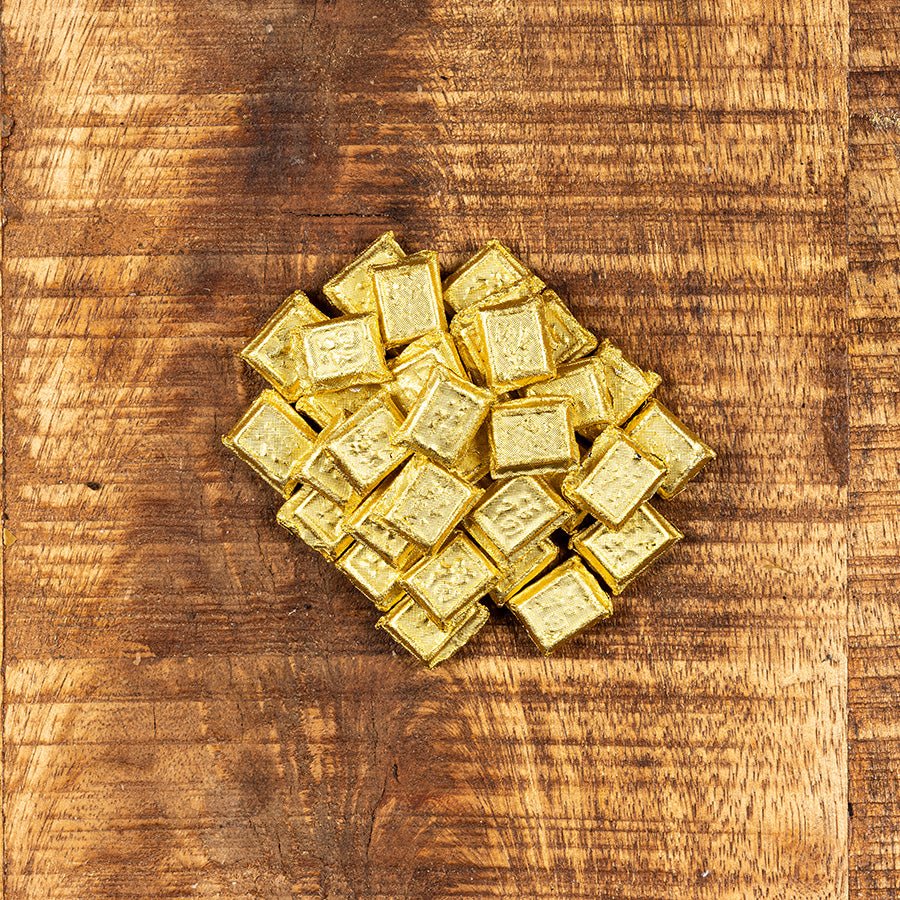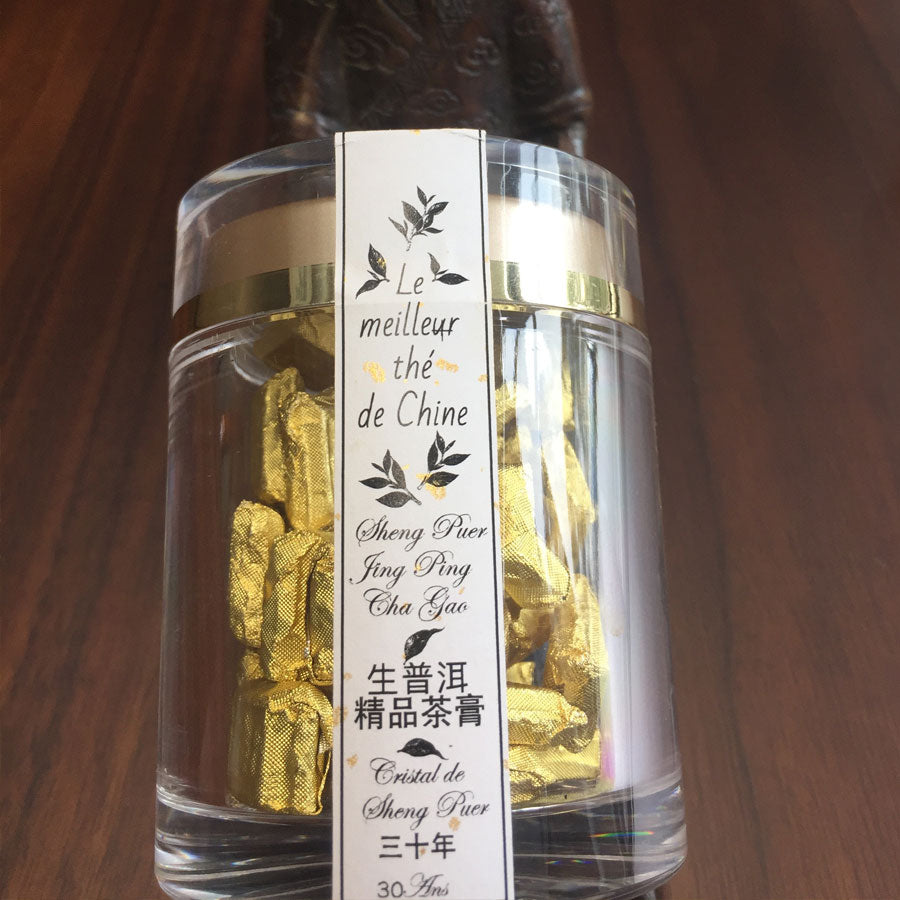Lemeilleurthedechine
Aged Crystal Puer Raw Tea – 50 g – 1990
Aged Crystal Puer Raw Tea – 50 g – 1990
Couldn't load pickup availability
Origin : Yunnan
Specificity: Crystal Puer Sheng Tea (Raw).
Conditioning : 1 bottle with a capacity of approximately 42 strips for a total weight of 50 grams
Bunch : Like a concentrated elixir of youth from very aged tea. We feel the aromas of these tablets aged on the Tibetan highlands for more than 20 years. Pronounced woody taste, with notes of cocoa, chocolate and hazelnut, as well as a round texture and a mountain scent.
Properties : Anti-cancer, mainly helps with detoxification. Has an active ingredient effect. Its high concentration of polyphenols plays an exceptional role in protecting yourself, fighting against infections and more specifically in China, the different “Cha Gao” are now used as a treatment against Coronavirus. Very condensed and powerful form. For this reason, it was widely considered a form of medicine during the Qing Dynasty, with the "ability to cure 100 ailments", particularly concerning the digestive tract.
Dosage: A bar represents between 1 and 1.25 grams which corresponds to around ten light infusions or a very dark one identical to a long coffee. A wafer in a cup, bowl or glass according to your convenience. For my part, I let it infuse completely in a cup to obtain a denser color. This will change from a cognac color to a coffee color when stirred. The longer you let it steep, the higher the concentration will be. Vary according to your desires.
Preparation : Carefully open the brochure packaging to first admire this wonderful work (Gong Yi) 工. I recommend that you place it in a transparent teapot or cup in order to admire the progress of the infusion. Preferably use mineral or filtered water, low in limescale. Do not rinse, directly pour water at 100 degrees Celsius.
Tone: Light cognac turning dark then coffee depending on the latency of the infusion.
Conservation : Store in its original packaging. Its bottle and individual packaging allow great mobility. Stores indefinitely. Some Cha Gao from the Ming period are still preserved in the Forbidden City in Beijing.



















